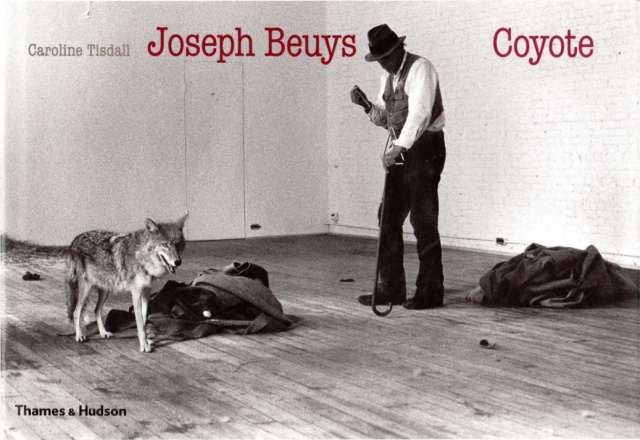Gyorgy Kepes: Language of Vision: Painting, Photography, Advertising-Design (1944–) [EN, ES, DE]
Filed under book | Tags: · advertising, art, art theory, bauhaus, colour, design, light, painting, perception, photography, vision

Noted painter, designer, theoretician Gyorgy Kepes analyzes the effect of visual language on the structure of human consciousness, in particular how the elements of line and form are perceived and how innovative types of perspective can lead to more dynamic representations in art. Over 300 photographs, drawings and illustrations.
With introductory essays by Siegfried Giedion and Samuel Ichiye Hayakawa
First published in 1944
Publisher Paul Theobald, Chicago, 1969
228 pages
Commentary: Ellen Lupton and J. Abbott Miller (1999), Leigh Anne Roach (Ph.D. dissertation, 2010).
Language of Vision (English, 1944/1969, 33 MB, no OCR)
El Lenguaje de la visión (Spanish, trans. Enrique L. Revol, 1969, added on 2017-6-21 via Valericke)
Sprache des Sehens (German, trans. Renate Pfriem and Almut v. Wulffen, 1971, 20 MB, added on 2019-12-3 via ARCH)
Hillel Schwartz: The Culture of the Copy: Striking Likenesses, Unreasonable Facsimiles, 2nd ed. (1996/2013)
Filed under book | Tags: · animal, appropriation, art, children, computing, copy, death, fashion, film, gender, genetics, history, imitation, japan, language, machine, memory, music, photography, piracy, property, reenactment, reproduction, sculpture, simulation, slavery, statistics, surgery, technology, theatre, time, war

The Culture of the Copy is an unprecedented attempt to make sense of the Western fascination with replicas, duplicates, and twins. In a work that is breathtaking in its synthetic and critical achievements, Hillel Schwartz charts the repercussions of our entanglement with copies of all kinds, whose presence alternately sustains and overwhelms us. Through intriguing, and at times humorous, historical analysis and case studies in contemporary culture, Schwartz investigates a stunning array of simulacra—counterfeits, decoys, mannequins, and portraits; ditto marks, genetic cloning, war games, and camouflage; instant replays, digital imaging, parrots, and photocopies; wax museums, apes, and art forgeries, not to mention the very notion of the Real McCoy. Working through a range of theories on biological, mechanical, and electronic reproduction, Schwartz questions the modern esteem for authenticity and uniqueness. The Culture of the Copy shows how the ethical dilemmas central to so many fields of endeavor have become inseparable from our pursuit of copies—of the natural world, of our own creations, indeed of our very selves.
This updated edition takes notice of recent shifts in thought with regard to such issues as biological cloning, conjoined twins, copyright, digital reproduction, and multiple personality disorder. At once abbreviated and refined, it will be of interest to anyone concerned with proglems of authenticity, identity, and originality.
First published in 1996
Publisher Zone Books, New York, 2013
ISBN 1935408453, 9781935408451
480 pages
Review (Terence Hawkes, London Review of Books, 1997)
Review (Francis Kane, The New York Times, 1997)
Review (Todd Gitlin, Los Angeles Times, 1997)
Download (removed on 2014-3-20 upon request of the publisher)
Comment (1)Caroline Tisdall: Joseph Beuys: Coyote (1976–)
Filed under artist publishing | Tags: · art, performance art, photography

“Coyote was the first attempt to capture a performance by Joseph Beuys in book form. Beuys’s Action, I Like America and America Likes Me, took place in May 1974, when he spent seven days and nights in a room with a wild coyote.
The artist’s activities during his confinement with the coyote followed a repeated pattern. He employed a number of objects: felt, a walking stick, gloves, a flashlight and the Wall Street Journal – fifty copies were delivered daily. Over the period of a week, man and beast developed a mode of wordless co-existence, a two-sided performance that became rich with assumed meanings. Caroline Tisdall, a longstanding friend of the artist, who has written extensively on Beuys and has directed films about him, took most of the photographs and wrote the accompanying text.”
First published by Schirmer/Mosel, Munich, 1976
Publisher Thames & Hudson, London, 2008
ISBN 9780500543689
160 pages
via Scribd
Commentary: Jan Verwoert (e-flux, 2008).
PDF (226 MB, updated on 2019-11-23)
Comments (4)
